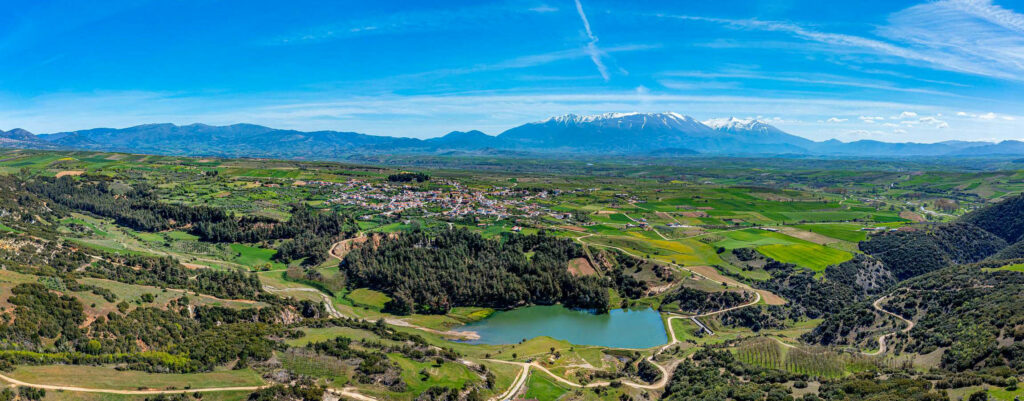Archaeological Museum of Dion

The Archaeological Museum of Dion, inaugurated in 1983, offers a thorough picture of the daily life and culture of the inhabitants of ancient Dion, from the Iron Age (1000-700 BC) to the early Christian centuries. The exhibits originate from the archaeological area of Dion and the wider area of Pieria. The three rooms of the museum feature grouped exhibits such as statues, tomb sculptures, architectural members, inscriptions, vessels, mosaics, coins and other items found mainly in the wider area of Dion. In the spacious ground floor, there are findings from the Roman baths and the sanctuaries of Demeter and Isis. The visitor can also admire an exquisite finding dating to the 1st century BC, a unique musical instrument of antiquity, the famous hydraulis (water organ) of Dion, brought to light during archaeological excavations in 1992. The bronze tubes of the instrument and the entire sound-producing system have survived.
Ancient Theatre of Dion

The theater of Dion was built during the Hellenistic years, on the same premises of a rudimentary theater built during the reign of Archelaos (5th century b.C.) The seat rows were made of brick and the floor of the orchestra was made of beaten earth, while the stage and the backstage were made of marble. The theater was deserted near the end of the 2nd century BC. Today, the historical theater has been renovated with modern seats and is utilized for cultural events and the Olympus Festival.
Ancient Livithra

Livithra was as ancient city situated at the foot of Mt. Olympus. The city was completely destroyed due to an overflow of Sys river which archaeologists estimate coincides with today’s Ziliana stream, in the gorge of Kanala. Archaeological excavations have revealed parts of the wall, the acropolis, tombs, house floors, coins and statuettes. Tradition has it that Leivithra is the place where the mythical musician Orpheus died.
Approaching the archaeological site of Livithra is challenging and it is therefore accessible only on foot and through a magnificent plain tree forest (a declared natural monument) on the side of Leptokarya.
Azoros

Azoros is built at an altitude of 520m and is identified with ancient Azoros, one of the towns of the Perraivic Tripolitida. It was named after the helmsman of Argo, Azoros, who took part in the Argonautic expedition. During the years of Turkish rule, the village was a dependency of the Monastery of Olympiotissa.
Archaeological site of Pythio

Excavations in Pythio revealed the temple of Poseidon from the 4th century BC and various other religious areas in its vicinity. The headless statue of a man was also found, identified as that of the god Apollo, and archaeologists are now striving to discover his glorious temple.
Archaeological site of Spathes

A Copper Age (1300-1200 BC) cemetery was discovered just off of Agios Dimitrios, on the road to Elassona, on a wooded slope of Olympus (altitude 1100 m), at the “Spathes” site. The box-shaped graves brought to light vessels, swords and jewelry, with the characteristics of the Mycenaean civilization, which means either that the region was at some point inhabited by Mycenaeans or that its prehistoric inhabitants had trade relations with southern Greece. One of the swords is similar to the sword found in the Acropolis of Mycenae.